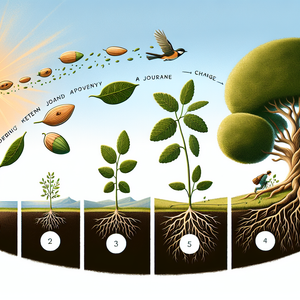The Language of Cats: Decoding Meows, Purrs, and Tail Movements

One of the most recognizable aspects of feline communication is their vocalizations. While cats meow primarily to communicate with humans, their vocal repertoire is vast and varied. Each meow can convey different emotions or needs, depending on its tone, pitch, and duration.
Meows
A short, high-pitched meow might indicate excitement or a need for attention, whereas a low, drawn-out meow could signify annoyance or a request for food. Dr. John Wright, a veterinary behaviorist, notes that "cats have learned to modify their vocalizations to communicate more effectively with humans," emphasizing the importance of observing context and tone. For example, a cat may meow enthusiastically when their owner returns home, signaling joy and recognition, while a more subdued meow may emerge during feeding time.
Purring
Often associated with contentment, purring can also indicate discomfort or stress. Research from the University of Sussex suggests that cats may purr to self-soothe when they are anxious or in pain. This duality highlights the need for cat owners to pay attention to accompanying body language, such as posture and facial expressions, to accurately interpret their cats' feelings. A cat that purrs while being petted is likely content, but if the purring continues during a veterinary examination, it may indicate a coping mechanism for stress.
Body Language: Tail Movements and Posture
In addition to vocalizations, cats communicate extensively through their body language, particularly their tails. Understanding tail movements can provide valuable insights into a cat's emotional state.
Tail Position
A cat with an upright tail is often displaying confidence and friendliness, whereas a lowered tail may indicate fear or submission. A puffed-up tail, on the other hand, signals that a cat is feeling threatened or agitated. According to Dr. Mikel Delgado, a cat behavior expert, "The tail is an essential indicator of a cat's emotional state, and being able to read these signals can help prevent conflicts." For instance, if a cat approaches another cat with an upright tail and relaxed posture, it may be signaling a desire to play. Conversely, a puffed tail can indicate a need for space, serving as a warning to other animals.
Posture and Movement
A relaxed cat will exhibit a loose body posture, while a cat that is arched or crouched may be feeling defensive or anxious. Watching how a cat approaches or retreats from people or objects can also provide clues about their comfort levels and mood. For example, a cat that slowly approaches a new toy with a low body posture may be feeling cautious, while a cat that leaps toward the toy with an arched back is likely feeling playful and confident.
The Importance of Context
While understanding vocalizations and body language is critical, the context in which these communications occur is equally important. For instance, a cat might suddenly start meowing loudly while sitting near an empty food bowl, indicating hunger. However, if the same cat is meowing while perched on a windowsill, it might be expressing a desire to go outside or interact with a bird. Creating a calm environment where cats feel safe to express themselves can also facilitate better communication. Ensuring that cats have places to hide, perch, or explore can reduce stress and allow them to communicate more openly. For instance, a cat that has a cozy hideaway may feel more secure and be more vocal when engaging with their owner.
Practical Tips for Cat Owners
Understanding a cat’s language requires observation and interaction. Here are some practical tips for cat owners: 1. **Observe and Record**: Keep a diary of your cat's vocalizations and body language in different situations. This can help you recognize patterns and better understand their needs and emotions. 2. **Engage in Play**: Regular playtime can lead to more vocalizations and varied body language as your cat becomes more comfortable expressing itself. Toys that mimic prey can elicit natural hunting behaviors and encourage communication. 3. **Create a Comfortable Environment**: Ensure your home has cozy spots, climbing structures, and safe spaces for your cat to retreat to when feeling overwhelmed. A stimulating environment can promote positive interactions. 4. **Consult Professionals**: If you notice significant changes in your cat's behavior or communication patterns, consider consulting a veterinarian or a feline behaviorist for guidance. They can provide insights into underlying issues that may affect your cat's communication.
Understanding the language of cats goes beyond mere curiosity; it is essential for fostering a deeper bond between humans and their feline companions. By decoding meows, purrs, and tail movements and considering the context of each interaction, cat owners can respond more effectively to their pets' needs. As we enhance our understanding of these remarkable creatures, we not only improve their quality of life but also enrich our own experiences as cat owners. Engaging with our cats on a deeper level ultimately leads to a more harmonious and fulfilling relationship, rooted in empathy and mutual understanding. The more we learn to interpret their unique language, the stronger the connection we can build with our feline friends.
Feline Behavior Specialist
Veterinary clinics, animal shelters, pet training facilities
Core Responsibilities
Assess and analyze feline behavior to provide tailored training and behavior modification plans for pet owners.
Conduct consultations with cat owners to educate them on understanding cat communication and body language.
Collaborate with veterinarians to address behavioral issues linked to medical conditions.
Required Skills
Strong knowledge of feline psychology and behavior.
Experience in animal training or behavior therapy, particularly with cats.
Excellent communication skills to effectively convey insights to cat owners.
Veterinary Technician with Feline Focus
Veterinary hospitals, animal clinics, animal welfare organizations
Core Responsibilities
Assist veterinarians during examinations and procedures specifically tailored to feline patients.
Educate cat owners about health, nutrition, and behavior, enhancing their understanding of feline needs.
Monitor and record vital signs and behavioral changes in cats during treatment.
Required Skills
Certification as a veterinary technician and a passion for working with cats.
Proficient in handling and restraining cats safely during medical procedures.
Strong interpersonal skills to build rapport with pet owners.
Pet Behavior Consultant
Pet training centers, animal behavior clinics, private practice
Core Responsibilities
Develop behavior modification plans addressing issues such as aggression, anxiety, and litter box problems in cats.
Provide on-site assessments of the cat’s environment and recommend changes to improve behavior.
Offer ongoing support and follow-up consultations to monitor progress and adjust strategies.
Required Skills
In-depth knowledge of animal behavior principles, particularly in felines.
Experience in behavioral assessments and modification techniques.
Ability to communicate effectively with pet owners about complex behavioral concepts.
Animal Welfare Educator
Animal shelters, non-profit organizations, educational institutions
Core Responsibilities
Develop educational programs for cat owners about feline health, behavior, and proper care.
Conduct workshops and outreach initiatives to promote responsible pet ownership.
Collaborate with local shelters to enhance community awareness of cat behavior and communication.
Required Skills
Strong background in animal science or a related field.
Experience in public speaking and educational program development.
Passion for animal welfare and effective communication skills.
Cat Groomer and Behavior Specialist
Pet grooming salons, veterinary clinics, pet boutiques
Core Responsibilities
Provide grooming services specifically tailored to the needs and comfort of cats, while observing their behavior.
Educate cat owners on grooming techniques and how grooming can affect a cat’s emotional state.
Identify any behavioral issues during grooming sessions and recommend appropriate interventions.
Required Skills
Certification in pet grooming with a specialization in cats.
Understanding of feline anatomy and behavior to ensure safe and stress-free grooming.
Excellent customer service skills to engage effectively with cat owners.


